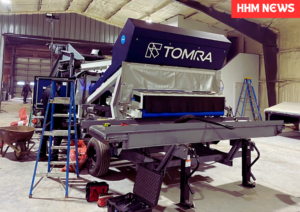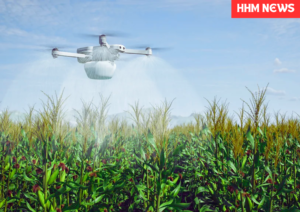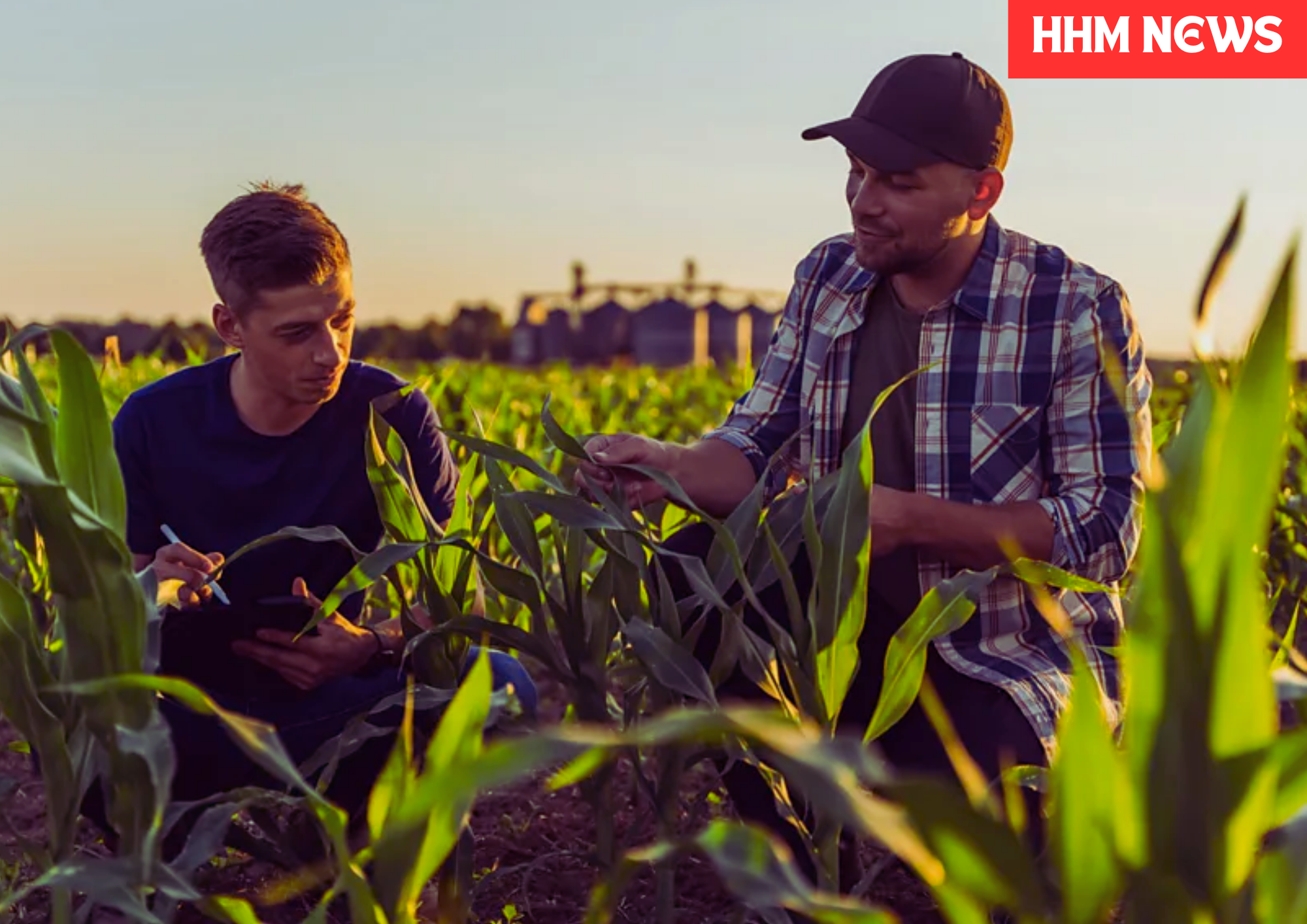Artificial intelligence is being increasingly adopted by American farmers. The technology is both necessary and highly developed.
AI A farmer in the American Midwest waves his smartphone at one of his soybean plants while standing in a verdant field. After taking a picture of a pest crawling on a leaf, he allows an AI -powered computer identify the type of bug and determine whether it should be taken seriously. Although this kind of technology may seem innovative, it is essential.
The lack of labour in the agricultural sector is endangering the industry’s ability to remain profitable and produce enough food. The world’s food systems cannot continue to be supported by the current number of hands. The US, which produces the third-largest agricultural output after China and India, is most affected by this issue.
The ageing of farmers is one of the primary problems. Many people are unable of putting in the long hours of physical effort required to manage a farm. Even though many of these businesses have been family-owned for many years, younger generations are choosing to work in less labor-intensive but higher-paying fields rather than taking over as leaders as they once did. These tendencies are also observed among the hired workers, who are primarily immigrants and comprise the remainder of the agricultural workforce.

According to Emily Buckman, head of government affairs at the trade group for the agricultural business, the American Farm Bureau Federation, “labour is the number one concern.” “A farmer today is 60 years old on average. Buckman was raised in Kentucky on a farm where her father, who is 70 years old, is still in charge of tilling the land.with only her brother to hlp him.
Some US farmers are looking to new robots and AI solutions to help solve the problem, especially because agricultural yields are declining and the worker pool is getting fewer and more expensive. “We think about solutions to solving that problem, and we do think that advances in technology could help ease some of the labour load,” Buckman states.
The application of artificial intelligence in agriculture is not entirely new; for example, auto-steering guidance systems for row crops like corn have been in use for 20 years. However, the adoption of AI has been rapid in recent years; as of late 2021, 87% of US agricultural enterprises were estimated to be utilizing AI in some capacity.
The rest of the globe may be significantly impacted if the almost two million American farmers that are pushing for AI adoption are successful. This is particularly true as the world’s population rises and climate change jeopardizes the agricultural ecosystems of some of the world’s greatest producers, including the United States, which exported goods worth over $100 billion (£78.9 billion) to China, Mexico, Canada, and Europe in the previous year alone.
According to Buckman, the industry wants to create and implement new technologies on a large scale that is accessible and inexpensive “so that farmers can feed the world.” By 2050, there will be two billion more people on the planet than there already are.
Fertile soil for AI
A broader approach known as “precision agriculture” includes using AI to increase crop yields while using less resources. The plan is for farmers to precisely target problem regions by utilizing cutting-edge technologies, such as drones that can measure a field’s water or pesticide levels.
“Precision agriculture helps reduce water waste, be more efficient and do more with less,” states Buckman. “US agriculture would’ve needed 100 million more acres 30 years ago to match today’s production levels,” she claims. The adoption of precision agriculture techniques in conjunction with AI and other technologies is primarily responsible for the output gains.

Major companies in the global agriculture space have pioneered and implemented many of these improvements at scale. One of them is John Deere, a company established in Illinois that creates and produces tractors and other technological gear for use in agricultural activities all over the world.
Director of new technologies at John Deere’s Intelligent Solutions Group (ISG), Sarah Schinckel, states, “Our goal with AI and technology is to help farmers do their jobs better.” Farming is “changing, it’s already here, and farmers are adopting it,” according to AI technologies. “We see a future where more and more farmers are using this technology.”
Schnickel says John Deere has had many AI tools available to farmers for decades, such as its Autotrac tools, which allow for hands-free combine steering. They’re only advancing as technology gets more sophisticated. In 2018, the company introduced See & Spray tech, which “adds AI to the machines” and helps farmers find and remove weeds within crops, and apply herbicides only where needed at an incredibly granular level. That tech has enabled farmers to reduce herbicide use by as much as 66%, says Schnickel, reaping considerable savings. “There’s a clear ROI for a lot of this stuff,” she adds.
A few years ago, John Deere also revealed completely autonomous tractors. According to Schnickel, those tractors represent a significant advancement toward a more comprehensive plan for farm autonomy, which ought to pick up speed over the next years. “We have goals by 2030 to bring autonomy to all production steps,” she continues.
Reaping the AI harvest
While lowering expenses and raising yields are clearly important to US farms and agricultural businesses, the advantages are far-reaching and may have global effects.
According to Steven Thomson, national program leader for Agricultural and Biosystems Engineering at the USDA National Institute of Food and Agriculture (NIFA), “More profit for farmers, a more robust supply chain, and lower prices for consumers mean improved productivity in the fields.”
“More sustainable practices mean less degradation of natural resources and prevention of ecological damage to our planet,” according to him. AI may be used to improve agriculture and animal management, which can assist eliminate sick plants or animals, boost revenue, and safeguard the environment.
The US government has invested in and implemented several grants for AI research centres that are devoted to agriculture, demonstrating their recognition of the potential of AI in farming. Developing “easy-to-use, AI-aided decision support tools to help land stewards identify win-win choices across environment, economy, and society” is, according to Thomson, the main objective of these programs.
Sophisticated new techniques abound, with an emphasis on precision resource distribution, soil surveillance, pathogen contact tracking to enhance food safety, and robotics to aid in harvesting. However, simpler advances are also being driven by funding.

According to Ganapathysubramanian, Iowa State researchers have used AI to create apps for smartphones that spot pests, saving them hours of laborious work. The instruments under development might also assist farmers in cutting costs, which is essential to making agriculture financially sustainable given the narrow profit margins that the sector now enjoys.
“AI provides a very natural and profitable tool for farmers to make more profound, localised decisions, hedge their bets and evaluate risks better,” Schnable states. These techniques might be easily and broadly implemented globally, which could lead to an exponential increase in food yields in regions of the world that most need them, such as Southeast Asia. “The marginal cost to deliver [an AI tool] in India is next to zero,” he states. “Once the tools are built, there’s essentially no cost to deliver them.”
When these technologies are in the hands of significant numbers of farmers, experts are cautiously enthusiastic about how they will help the agricultural sector combat changing risks from the environment, the unstable labour market, and other sources. The demand has never been greater, and there is a lot of opportunity.
BY-HHM
